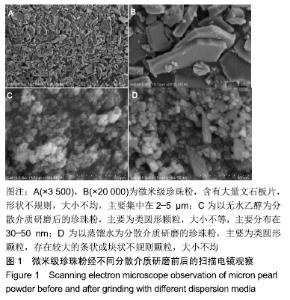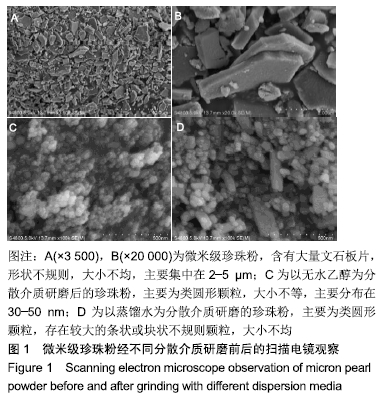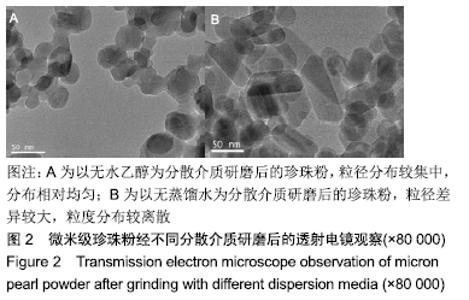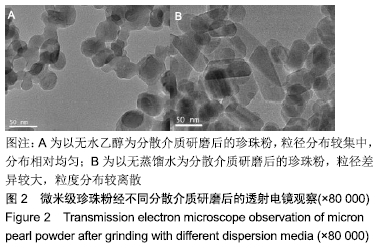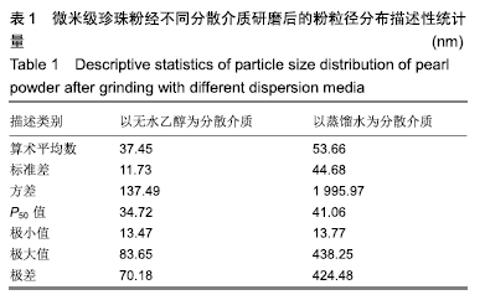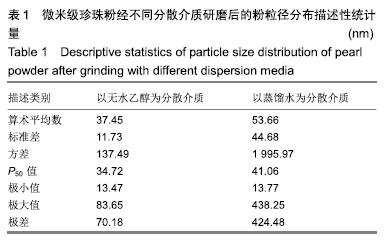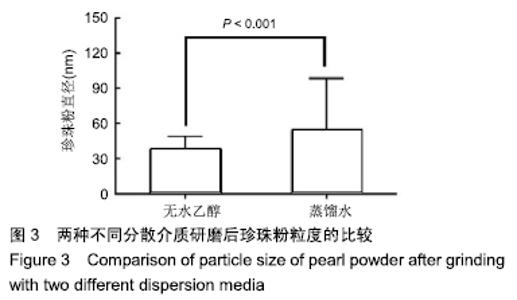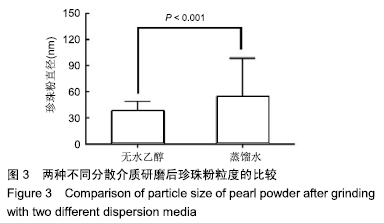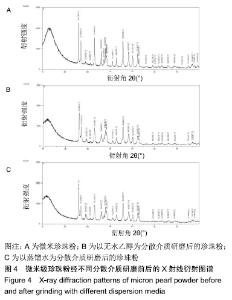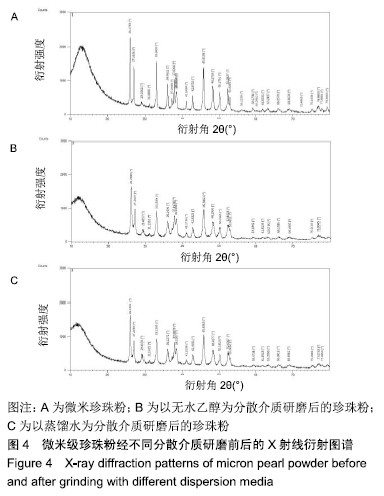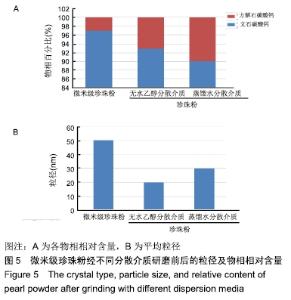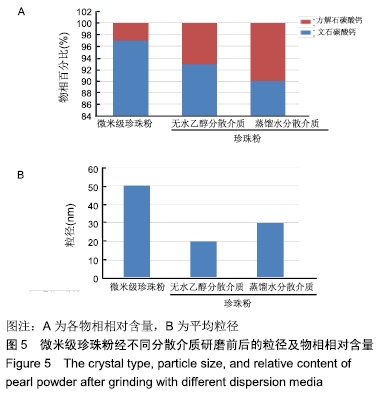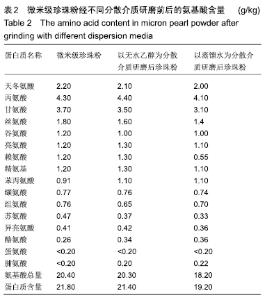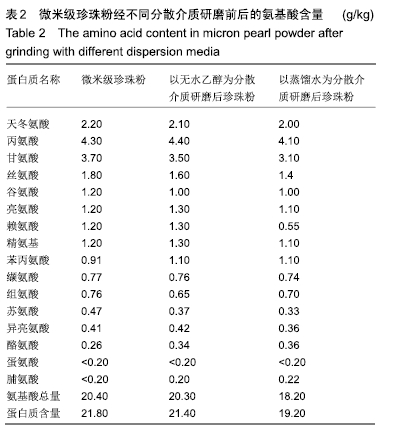[1] WANG C, HE J, XIE T, et al. A preliminary comparison study on the compositions of several seawater and freshwater shell nacres grown in China.Acta Mineralogica Sinica.2012;32(2): 310-315.
[2] 蒲蔚,原新朋,周媛,等.珍珠粉联合复方甘草酸苷治疗慢性湿疹的临床观察[J].中国民族民间医药,2018,27(9):85-87.
[3] 黄秀芳.珍珠粉预防性治疗产妇会阴侧切缝合术后切口感染的临床效果[J].临床合理用药杂志,2019,12(30):97-98.
[4] 陈莉,胡光云,王小俊,等.珍珠粉联合氧化锌治疗失禁性皮炎的疗效观察[J].广州中医药大学学报,2019,36(1):53-58.
[5] 何玲.氧化锌软膏联合珍珠粉治疗新生儿重度尿布皮炎临床观察[J].实用中医药杂志,2019,35(6):741-742.
[6] 邵强,罗秀,张芹芹,等.珍珠粉联合维生素B2治疗复发性阿弗他溃疡的临床观察[J].中医临床研究,2018,34(10):90-92.
[7] 董娜,梁婧,刘雨晴,等.珍珠粉中微量元素测定[J].安徽农业科学, 2011, 39(1):315-316.
[8] 李芝娟,陈晔,梁卫.珍珠粉/复方氯雷酊复合面膜治疗寻常痤疮的效果[J].当代护士(中旬刊),2016(1):122-124.
[9] 柯学,许颖,佘佐彦.纳米级与微米级珍珠粉中碳酸钙对离体小鼠皮肤渗透性的研究[J].中国新药与临床杂志,2006,25(1):25-28.
[10] 杨莉,田吉来,柯学.纳米级与微米级珍珠粉对大鼠深Ⅱ度烫伤的药效学评价[J].临床医药实践,2012,21(4):281-284.
[11] 崔敏,康胜泰.纳米珍珠粉治疗口腔溃疡38例临床观察[J].浙江中医杂志, 2010,45(5):333.
[12] ASVANUND P, CHUNHABUNDIT P. Alveolar Bone Regeneration by Implantation of Nacre and B-Tricalcium Phosphate in Guinea Pig. Implant Dent.2012;21(3):248-253.
[13] ASVANUND P, CHUNHABUNDIT P, SUDDHASTHIRA T. Potential Induction of Bone Regeneration by Nacre: An in Vitro Study.Implant Dent.2011;20(1):32-39.
[14] 王建钧,陈建庭,杨春露.珍珠层水溶性基质对兔骨髓基质干细胞Bmp-2和Cbfα1基因表达的影响[J].南方医科大学学报,2007,27(12):1838-1840.
[15] CHATURVEDI R, SINGHA PK, DEY S. Water Soluble Bioactives of Nacre Mediate Antioxidant Activity and Osteoblast Differentiation.PLoS One.2013;8(12):e84584.
[16] YANG YL, CHANG CH, HUANG CC, et al. Osteogenic Activity of Nanonized Pearl Powder/Poly(Lactide-Co-Glycolide) Composite Scaffolds for Bone Tissue Engineering.Biomed Mater Eng. 2014;24(1):979-985.
[17] DENG Y, LI G, SONG W, et al. Preparation and properties of pearl powder/polypropylene composites and their biocompatibility.Biomed Mater Eng.2015;26 Suppl 1:S27-S34.
[18] GREEN DW, KWON HJ, JUNG HS. Osteogenic potency of nacre on human mesenchymal stem cells.Mol Cells.2015;38(3):267-272.
[19] ZHAO M, SHI Y, HE M, et al. PfSMAD4 plays a role in biomineralization and can transduce bone morphogenetic protein-2 signals in the pearl oyster Pinctada fucata.BMC Dev Biol. 2016;16:9.
[20] 陈灵,徐普,陈明炜,等.纳米级淡水珍珠粉修复兔股骨远端骨缺损的体内研究[J].现代口腔医学杂志,2017,31(1):15-18.
[21] 郑斌,徐普,李晓妮,等.纳米珍珠粉对小鼠骨髓间充质干细胞活性影响研究[J].中国实用口腔科杂志,2019,12(1):26-30.
[22] 王秋子,徐普,李娜,等.纳米珍珠粉/壳聚糖-透明质酸支架修复兔股骨远端骨缺损的实验研究[J].天然产物研究与开发,2019,31(4):696-703,668.
[23] 毛秋华,徐普,王彬娉,等.纳米级淡水珍珠粉的制备研究[J].口腔医学研究, 2016,32(12):1244-1247.
[24] 毛秋华,徐普,程亚楠,等.纳米淡水珍珠粉的制备及生物学实验评价[J].现代口腔医学杂志,2018,32(5):257-260.
[25] 张伟钢,汪港,唐建,等.贝壳珍珠层动态的文石板片厚度及其新结构模型[J].广西大学学报(自然科学版),2009,34(4):509-512.
[26] MURR LE, RAMIREZ DA. The Microstructure of the Cultured Freshwater Pearl.JOM.2012;64(4):469-474.
[27] PERDIKOURI C, KASIOPTAS A, GEISLER T, et al. Experimental Study of the Aragonite to Calcite Transition in Aqueous Solution. Geochimica et Cosmochimica Acta.2011;75(20):6211-6224.
[28] ISLAM KN, BAKAR MZBA, ALI ME, et al. A Novel Method for the Synthesis of Calcium Carbonate (Aragonite) Nanoparticles From Cockle Shells.Powder Technol.2013;235:70-75.
[29] GB/T 19590-2011,纳米碳酸钙[S].北京:中国标准出版社, 2011.
[30] 张建刚,童银洪,刘贵昂.纳米珍珠层粉的制备[J].湛江海洋大学学报, 2003,23(6):26-29.
[31] ISLAM KN, BAKAR MZBA, NOORDIN MM, et al. Characterisation of Calcium Carbonate and its Polymorphs From Cockle Shells (Anadara Granosa).Powder Technol.2011;213(1-3):188-191.
|
